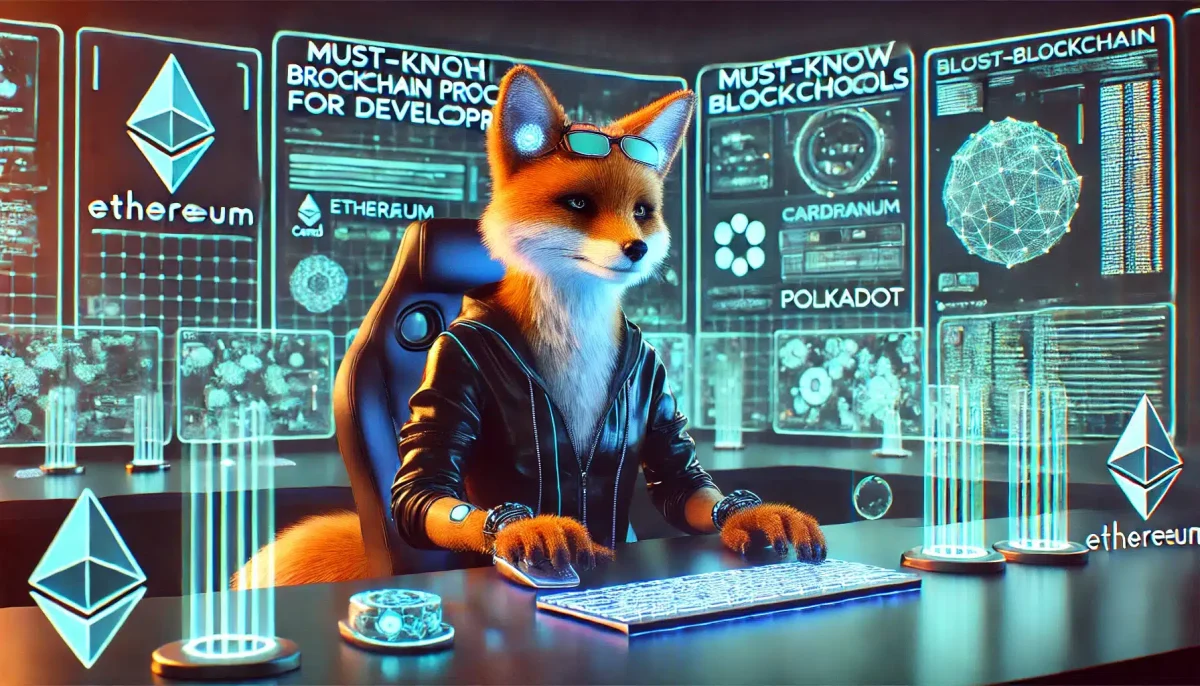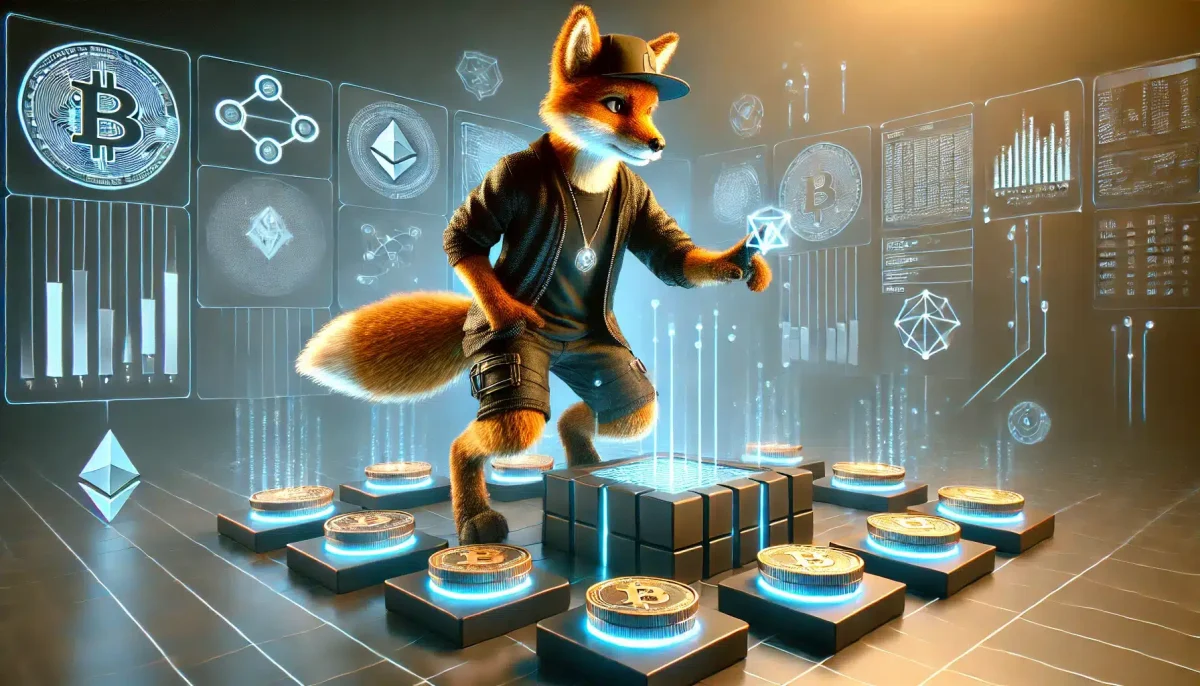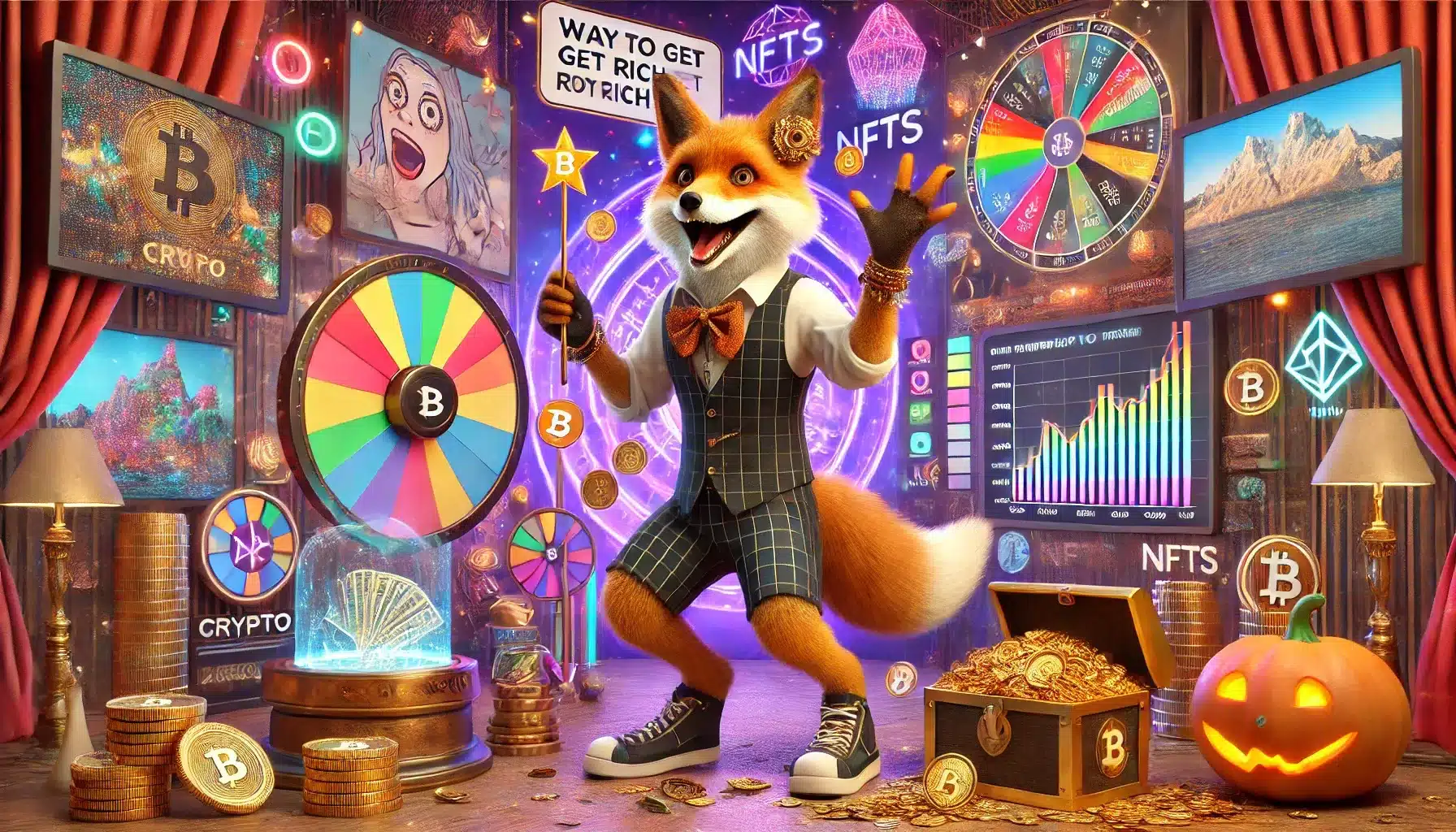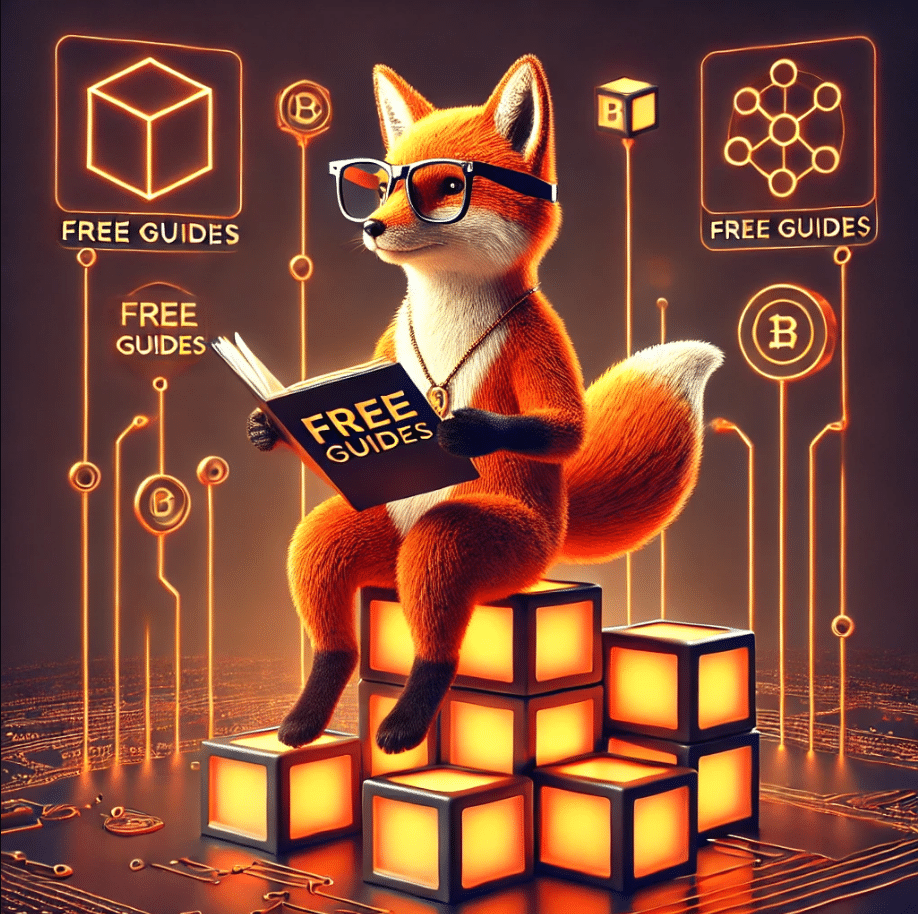
In recent years, decentralized finance (DeFi) has emerged as one of the most transformative developments in the financial world. Powered by blockchain technology, DeFi is revolutionizing how we think about money, investing, and access to financial services. A Beginner’s Guide To Decentralized Finance can help you understand how, unlike traditional finance (TradFi), which relies on centralized banks and institutions, DeFi operates on decentralized networks, giving individuals more control and transparency.
If you’ve ever wondered how DeFi works or why it’s gaining so much traction, this guide is for you. Understanding DeFi is not just about keeping up with the latest trends; it’s about taking steps toward financial independence in a rapidly evolving digital world. In this blog, we’ll explore the fundamentals of DeFi, its key features, and how you can get started.
What is Decentralized Finance (DeFi)?
Decentralized finance, or DeFi, refers to a suite of financial services built on blockchain technology that operates without centralized intermediaries. At its core, DeFi aims to democratize access to financial services, enabling anyone with an internet connection to participate.
Key Principles of DeFi
- Transparency: Transactions and smart contracts are recorded on public blockchains, ensuring visibility and accountability.
- Decentralization: Unlike banks or other centralized entities, DeFi applications (dApps) rely on distributed networks and smart contracts.
- Accessibility: DeFi is open to anyone, regardless of location or financial background.
How DeFi Differs from Traditional Finance
- Control: In DeFi, users retain control of their assets through private keys. TradFi requires trusting third parties like banks.
- Intermediaries: DeFi removes intermediaries, using smart contracts to execute transactions automatically.
- Availability: While traditional services may be limited by geography or business hours, DeFi operates 24/7 worldwide.
Key Components of DeFi
- Blockchain Technology: Provides the foundation for secure, transparent, and immutable transactions.
- Smart Contracts: Automated programs that execute predefined actions, such as transferring funds when specific conditions are met.
- Tokens: Digital assets representing various utilities within the DeFi ecosystem, such as governance or collateral.
Key Features of DeFi
DeFi’s appeal lies in its groundbreaking features that distinguish it from traditional financial systems:
Accessibility
DeFi is open to anyone with an internet connection and a compatible wallet. There are no credit checks, lengthy application processes, or exclusion based on geography.
Transparency
Every transaction and contract in DeFi is recorded on a public blockchain. This transparency builds trust and enables anyone to audit activities.
Interoperability
DeFi applications are designed to work seamlessly with one another. For example, you can use tokens earned from a lending platform on a decentralized exchange.
Decentralization
By removing centralized intermediaries, DeFi empowers users to maintain control of their financial activities. Governance is often handled by decentralized organizations where stakeholders vote on key decisions.
Core Components of DeFi
DeFi is made up of several key components, each contributing to its diverse ecosystem:
1. Decentralized Exchanges (DEXs)
DEXs, like Uniswap and SushiSwap, allow users to trade cryptocurrencies directly with one another without intermediaries. They operate using liquidity pools and automated market maker (AMM) protocols.
- How They Differ: Unlike centralized exchanges (e.g., Bybit), DEXs don’t require users to deposit funds into an account, reducing risks associated with hacks.
2. Lending and Borrowing Platforms
Platforms like Aave and Compound enable users to lend their assets to earn interest or borrow funds by providing collateral. The entire process is managed by smart contracts.
- Advantages: Faster approvals, better rates, and no need for credit checks.
3. Stablecoins
Stablecoins are cryptocurrencies designed to maintain a stable value, typically pegged to a fiat currency like the USD. Examples include USDT, DAI, and USDC.
- Why They Matter: Stablecoins reduce the risk of volatility, making them essential for many DeFi activities.
4. Yield Farming and Liquidity Pools
Yield farming involves earning rewards by providing liquidity to DeFi platforms. Liquidity pools are essential for DEXs and other DeFi services.
- Potential Returns: Users can earn significant returns, though risks like impermanent loss exist.
5. Insurance and Risk Management
DeFi insurance platforms like Nexus Mutual protect users against risks such as smart contract failures or hacks.
- Importance: Insurance mitigates risks, making DeFi investments more secure.
Benefits of DeFi
DeFi offers several advantages that are transforming the financial landscape:
Financial Inclusion
DeFi provides access to financial services for unbanked populations, offering opportunities for savings, investments, and credit.
Lower Fees
With no intermediaries, DeFi significantly reduces transaction and service fees compared to traditional banks.
Ownership and Control
Users maintain full control over their assets, ensuring greater security and autonomy.
ps: another big benefit of defi is the decentralized identity.
Risks and Challenges in DeFi
Despite its many benefits, DeFi is not without risks. Understanding these challenges is crucial for navigating the ecosystem:
Smart Contract Vulnerabilities
Smart contracts are the backbone of DeFi, but they are not infallible. Bugs or flaws in the code can lead to significant losses. Hackers often target these vulnerabilities to exploit DeFi protocols.
- Example: The 2021 Poly Network hack resulted in over $600 million in stolen funds.
Learn more deeply about smart contracts and how they works!
Market Volatility
Cryptocurrency markets are notoriously volatile. This volatility can impact the value of assets held within DeFi platforms, leading to potential losses.
- Impermanent Loss: Liquidity providers may experience losses due to price fluctuations in liquidity pools.
Regulatory Uncertainties
Governments worldwide are grappling with how to regulate DeFi. The lack of clear guidelines creates uncertainties for developers and users alike, potentially leading to sudden restrictions or legal issues.
How to Get Started with DeFi
Getting started with DeFi might seem daunting, but breaking it into manageable steps can make the process easier:
Step 1: Set Up a Wallet
A secure crypto wallet is essential for interacting with DeFi platforms. Popular options for beginners include MetaMask and Trust Wallet.
- Secure Your Wallet: Store your private keys and seed phrases offline in a safe location. Never share them with anyone.
Step 2: Acquire Cryptocurrency
You’ll need cryptocurrency to participate in DeFi. Ethereum (ETH) and Binance Coin (BNB) are commonly used.
- How to Buy: Use reputable exchanges like Coinbase, Binance, or Kraken. Alternatively, peer-to-peer platforms can also be an option.
Step 3: Choose a DeFi Platform
Research platforms based on your goals, such as trading, lending, or earning rewards. Start with user-friendly platforms like Aave or Uniswap.
- Start Small: Test the platform with a small amount of cryptocurrency before committing larger sums.
Step 4: Explore Use Cases
Experiment with staking, lending, or trading to familiarize yourself with DeFi functionalities. Begin with low-risk transactions to build confidence.
Tools and Resources for Learning DeFi
To enhance your understanding of DeFi, leverage these resources:
Educational Platforms
- DeFi Pulse: A comprehensive tracker for DeFi projects and market trends.
- CryptoCompare: Offers tutorials and guides for beginners.
Community Forums and Social Media
Engage with DeFi communities on Reddit, Discord, and Twitter to stay updated and learn from experienced users.
Recommended Blogs and Podcasts
- Bankless Podcast: Focused on DeFi and the broader Ethereum ecosystem.
- Medium Articles: Many DeFi platforms publish detailed guides and updates on Medium.
The Future of DeFi
The DeFi ecosystem continues to evolve rapidly, with several exciting developments on the horizon:
Innovations in Scaling
Layer-2 solutions like Optimism and Arbitrum aim to address Ethereum’s scalability issues, reducing transaction fees and improving speed.
Cross-Chain Interoperability
Projects like Polkadot and Cosmos are working to connect different blockchains, enabling seamless interaction across platforms.
Mainstream Adoption
As DeFi becomes more user-friendly and regulated, it’s likely to attract broader participation from individuals and institutions.
How to Get Started with DeFi
- Set Up a Wallet: Secure options like MetaMask or Trust Wallet are ideal.
- Acquire Cryptocurrency: Use exchanges like Bybit. By signing up with my Bybit referral link, you can access up to $30,050 in Welcome Rewards, including a $50 sign-up bonus and VIP trading perks. Plus, you’ll get an exclusive “Supporter” role in my Discord server.
- Secure Your Assets: To fully control your DeFi journey, consider getting a hardware wallet like Ledger. With my Ledger affiliate link, you’ll ensure the highest level of security for your private keys and crypto assets.
- Explore Platforms: Start with popular dApps like Aave or Uniswap and begin with small investments.
Conclusion
DeFi represents a new frontier in finance, offering unprecedented control, transparency, and accessibility. By taking control of your financial future and securing your assets with tools like Ledger and Bybit, you can confidently navigate the DeFi landscape while maximizing rewards and minimizing risks.
Ready to dive into DeFi? Secure your assets with Ledger and start trading with Bybit today!
FAQs
What is the difference between DeFi and traditional finance?
DeFi operates on decentralized networks, removing intermediaries and providing greater control to users. Traditional finance relies on centralized entities like banks and is often less transparent.
How safe are DeFi platforms for investments?
While DeFi offers opportunities, it’s not without risks such as smart contract vulnerabilities and market volatility. Research and caution are essential.
What are the best wallets for DeFi beginners?
How can I minimize risks while using DeFi applications?
Start with small investments, use secure wallets, and consider platforms with insurance options. Regularly monitor your assets and transactions.
Are there any regulatory concerns with DeFi?
Yes, regulatory uncertainty is a challenge for DeFi. Governments are still defining policies, which could impact the ecosystem in the future.
“Guess what? When you click and buy through our links, you’re doing more than improving your journey. You’re supporting us in a way that doesn’t cost you extra but helps us keep bringing you the best blockchain posts. It’s a pump for both of us!”
-0xteumessia






